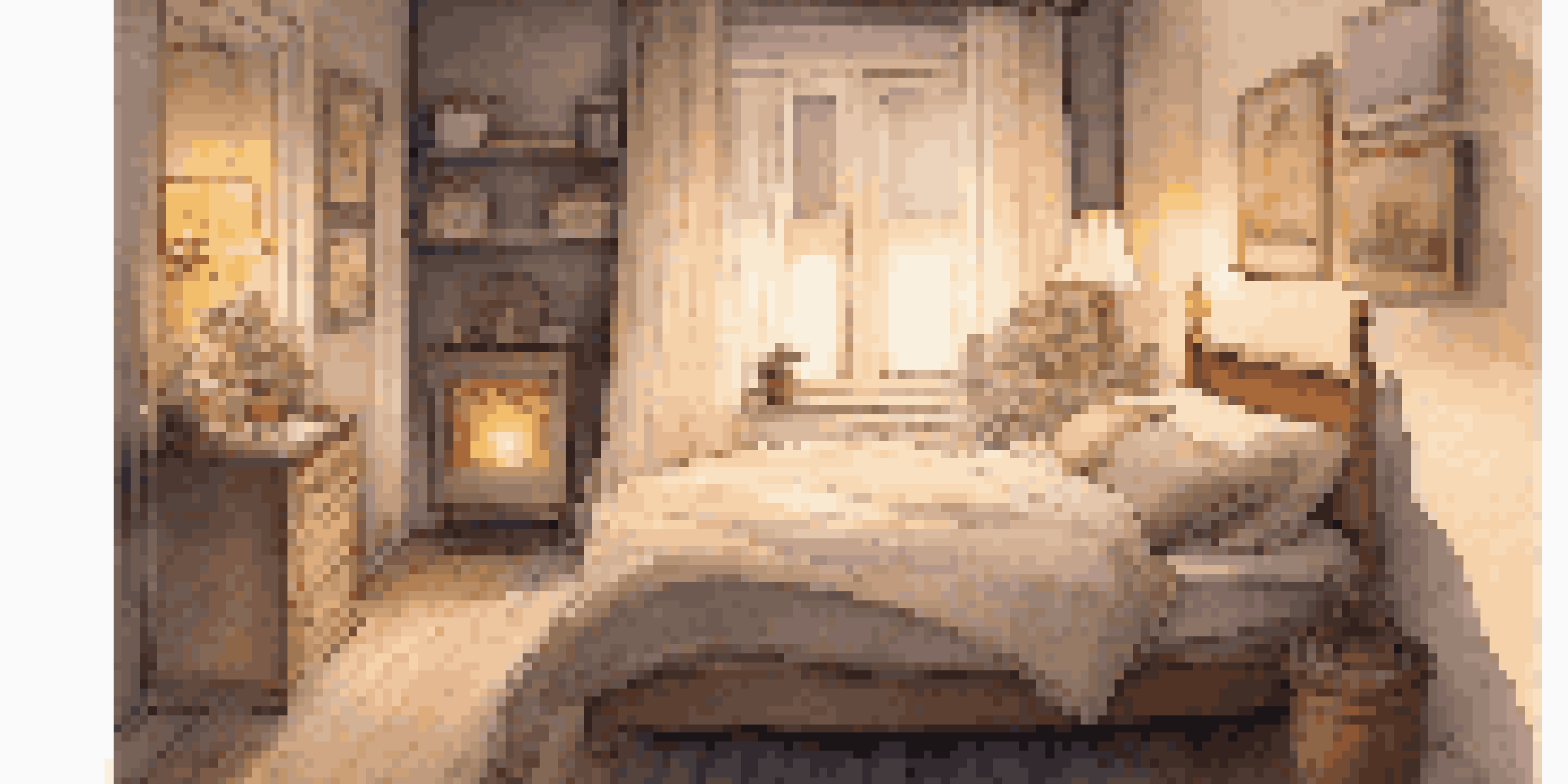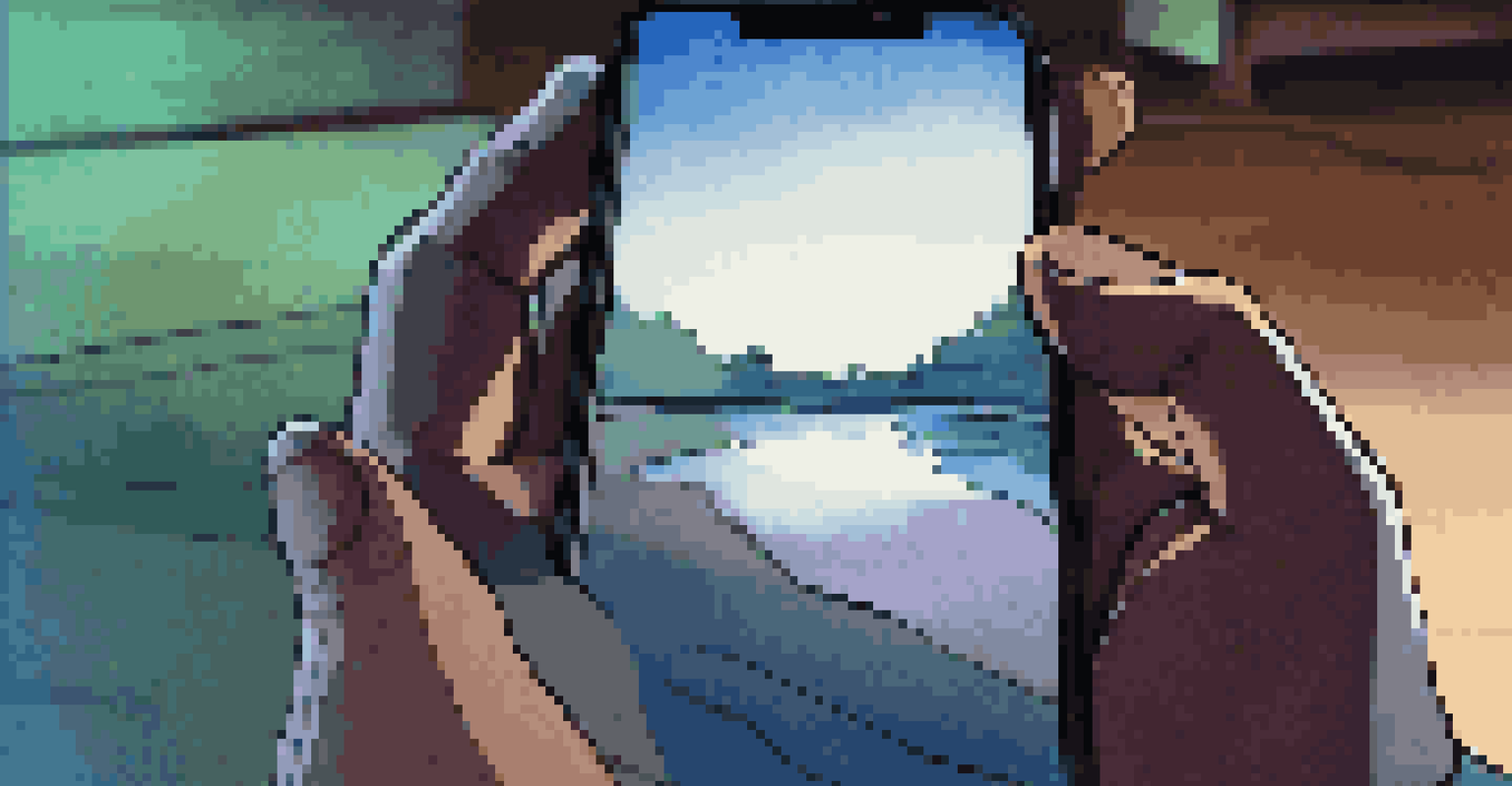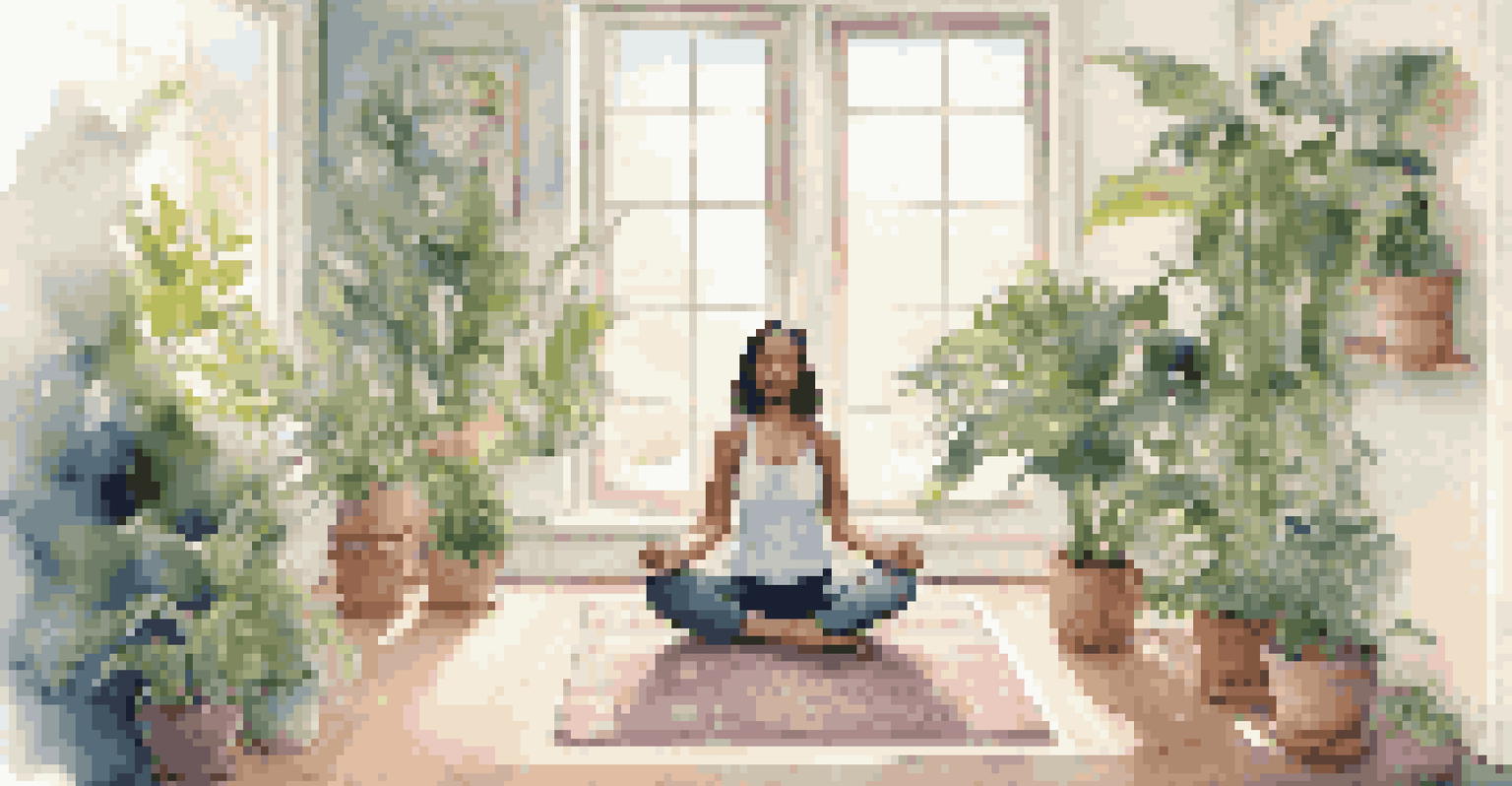How Sleep Patterns Change with Increased Technology Use

Understanding Sleep Patterns in the Digital Age
Sleep patterns have always been influenced by our environment, but with the rise of technology, these patterns have drastically changed. Many people now find themselves staying up late, glued to screens, which can interfere with their natural circadian rhythms. The blue light emitted by devices like smartphones and tablets is particularly disruptive, signaling to our brains that it's still daytime and delaying melatonin production.
Sleep is the best meditation.
Circadian rhythms are the body's internal clocks that regulate sleep-wake cycles, typically aligning with the day-night cycle. When we expose ourselves to screens late at night, we may feel more alert, making it difficult to unwind and prepare for sleep. This disruption can lead to a range of sleep disorders, from insomnia to poor sleep quality, affecting our overall health and well-being.
Understanding how our sleep patterns have evolved alongside technology is crucial. Recognizing the impact of screen time on our nightly routines can help us make more informed choices about our technology use, potentially leading to better sleep and improved health.
The Science Behind Blue Light and Sleep Disruption
Blue light, which is prevalent in many digital devices, can have a profound effect on sleep. It suppresses the secretion of melatonin, the hormone responsible for regulating sleep cycles. When melatonin levels are low, it can be challenging to fall asleep and stay asleep, leading to a vicious cycle of sleep deprivation and excessive technology use.

Research has shown that exposure to blue light in the evening can shift our circadian rhythms, pushing our sleep times to later hours. This is particularly concerning for teens and young adults, who are often more susceptible to these changes due to their developmental sleep needs. As they stay up later, it can impact their academic performance, mood, and physical health.
Technology Disrupts Sleep Patterns
The rise of screens and blue light has significantly impacted our natural sleep cycles, making it harder to unwind at night.
By understanding the science behind blue light, we can take practical steps to mitigate its effects. Simple solutions like using blue light filters on devices or establishing a tech-free wind-down period before bed can help restore healthier sleep patterns.
Impact of Social Media on Sleep Quality
Social media has become a significant part of our daily lives, often extending into the late hours. Scrolling through feeds or engaging in conversations can easily lead to spending more time on devices than intended. This habit can disrupt our ability to relax and prepare for sleep, as our minds remain active and engaged.
Technology is a useful servant but a dangerous master.
Additionally, the emotional rollercoaster of social media—whether it's comparing ourselves to others or dealing with online conflicts—can contribute to anxiety and stress. These feelings can further hinder our ability to wind down, making it even harder to achieve a restful night's sleep. The cycle of social media use and sleep deprivation is a growing concern for mental health professionals.
To combat this, individuals might consider setting boundaries for social media usage, especially in the evening hours. By prioritizing real-life connections and reducing screen time, we can cultivate a more peaceful environment conducive to sleep.
The Role of Streaming Services in Sleep Disruption
Streaming services have revolutionized the way we consume content, but they also play a significant role in how we manage our sleep. The binge-watching culture encourages late-night viewing, which can lead to sacrificing sleep for just one more episode. This habit can easily turn into a nightly routine, leaving us feeling tired and groggy the next day.
Moreover, the engaging nature of shows and movies can stimulate our brains, making it difficult to disengage and settle down for the night. The cliffhangers and suspenseful narratives keep us wanting more, often leading to poor sleep choices. This can create a cycle of fatigue where we rely on caffeine and stimulants to get through the day.
Social Media and Sleep Issues
Engaging with social media late at night can lead to increased anxiety and disrupt our ability to relax before bed.
To break free from this cycle, it can be helpful to establish a cut-off time for watching shows. Implementing a rule like only watching one episode per night can make a significant difference in maintaining a healthy sleep schedule.
The Effects of Gaming on Sleep Patterns
Gaming has become a popular pastime, but its effects on sleep patterns are often overlooked. Many gamers find themselves immersed in their games, losing track of time and sacrificing sleep in the process. The excitement and adrenaline rush associated with gaming can keep the brain active long after the console is turned off.
Research indicates that late-night gaming can lead to increased heart rates and heightened alertness, making it difficult to transition into a restful state. This can result in sleep deprivation, impacting mood, cognitive function, and overall health. Gamers, particularly younger individuals, may not recognize the long-term consequences of their gaming habits on their sleep.
Setting boundaries around gaming, such as designated gaming hours and tech-free days, can promote healthier sleep habits. Finding balance is key to enjoying gaming while also prioritizing well-being.
Creating Healthy Sleep Habits Amidst Technology Use
In light of how technology impacts sleep, creating healthy sleep habits is essential. Establishing a bedtime routine that prioritizes relaxation can help signal to your body that it's time to wind down. Activities such as reading a book, meditating, or even gentle stretching can serve as effective alternatives to screen time.
Additionally, the bedroom should be a sanctuary for sleep. Keeping it dark, quiet, and cool can create an optimal environment for rest. Limiting technology in the bedroom, including phones and tablets, can help reinforce the association between your sleeping space and sleep, rather than activity or stimulation.
Creating Healthy Sleep Habits
Establishing a tech-free bedtime routine and a calming sleep environment can improve sleep quality amidst pervasive technology.
By implementing these strategies, individuals can take proactive steps to improve their sleep quality despite the ever-present influence of technology. Small changes can lead to significant improvements in overall health and well-being.
The Future of Sleep in a Tech-Dominated World
As technology continues to evolve, so too will its impact on our sleep patterns. The future may bring new innovations aimed at improving sleep quality, from sleep-tracking apps to smart mattresses designed to optimize rest. However, it remains crucial for individuals to stay informed and mindful of their technology use.
Balancing the benefits of technology with the need for adequate rest will be a challenge. As we become more connected, finding ways to disconnect and prioritize sleep will be essential for our long-term health. Education on the importance of sleep and its relationship with technology can empower individuals to make better choices.

Ultimately, the future of sleep in a tech-dominated world will depend on our ability to adapt and find harmony between our digital lives and our well-being. By being proactive and intentional about our technology use, we can foster healthier sleep habits that support a vibrant and balanced life.